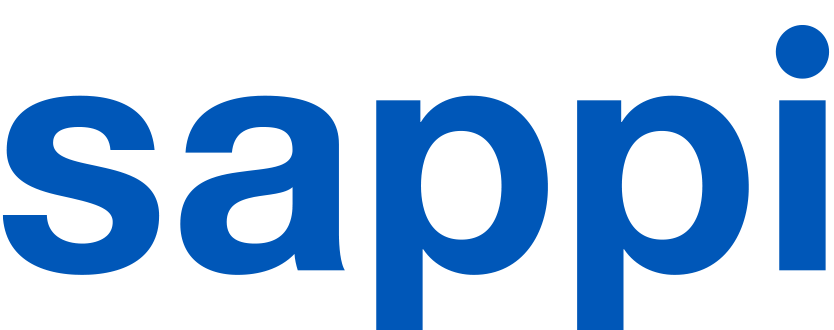Media Release
Johannesburg, 07 November 2013
Supporting Documents
Sappi Limited results for the fourth quarter and year ended September 2013. Strategic initiatives successfully completed and commissioned
Summary
- Dissolving pulp and speciality paper conversions commissioned and running well
- Operating profit excluding special items US$70 million (Q4 2012 US$118 million)
- Net cash generated US$111 million (Q4 2012 US$203 million)
- Special items charges US$177 million of which US$94 million are non-cash
- Earnings per share excluding special items 2 US cents (Q4 2012 11 US cents)
- Net debt US$2,214 million (Q4 2012 US$1,979 million)
Commenting on the key financial highlights of the quarterly and year-end results, Sappi Chief Executive Officer Ralph Boëttger said:
“2013 was an important transitional year for Sappi with the commissioning of major capital projects and further repositioning of the business. Our strategy to reposition Sappi for growth, higher margins and improved profitability is on track."
While the group’s operating profit excluding special items improved compared to the prior quarter, for the full year it was well below that of the previous year. Market conditions in the graphic paper business, particularly in Europe, were worse than expected, with significant demand declines in both the European local and export markets, and continued downward pressure on selling prices. The operating profit for the year was negatively affected by the once off impact of the dissolving pulp conversions at both the Cloquet and Ngodwana pulp mills and the speciality packaging conversion of paper machine 2 at Alfeld Mill.
“In Europe our performance improved compared to the prior quarter, but the business still made an operating loss excluding special items for the quarter as a result of lower paper prices, increased pulp costs and a continued decline in graphic paper demand. In North America, operating profit excluding special items for the quarter was lower than for the equivalent quarter last year due to a weaker graphic paper market, particularly as regards pricing and dissolving pulp production and sales not yet at the full rate for the quarter. The release paper business had another good quarter, with higher sales volumes and better product mix than in the equivalent quarter last year.
“The Southern African Specialised Cellulose business benefited from higher pulp prices, a weaker Rand/Dollar exchange rate and increased production and shipments. The local graphic paper market remains challenging, with higher paper pulp and other input prices as well as a competitive import market. The domestic paper packaging business is improving, with increased sales volumes and pricing during the quarter and improved operational performance as a result of the actions we have taken in this business.
“The Specialised Cellulose business, inclusive of the Cloquet pulp mill in North America, performed exceptionally well during the quarter and generated US$88 million of EBITDA excluding special items. The combination of increased shipments, favourable exchange rate and production efficiencies resulted in a margin of 39% which is well above the normalised margin for this business. Sales volumes for the quarter were 253,000 tons, an increase of 36% over the equivalent quarter in the prior year.
“Our profitability in the 2014 financial year is expected to be better than that of 2013 as a result of a larger Specialised Cellulose business, the gradual improvement in performance of our European paper business, an improvement in the profitability of our Southern African paper business and the consistent performance of our North American paper businesses.”

The year and quarter under review
Operating profit excluding special items for the year amounted to US$191 million. Special items amounted to a charge of US$161 million, comprising mainly impairment and restructuring charges of US$252 million related to both our European and Southern African businesses. This was partly offset by plantation fair value pricing gains of US$87 million.
Operating profit excluding special items for the quarter was US$70 million compared to US$118 million for the equivalent quarter last year and US$8 million in the quarter ended June 2013. As a result of impairment and restructuring charges in the quarter, the group incurred a net loss for the quarter. The loss per share for the quarter was 27 US cents (including a charge of 29 US cents in respect of special items) compared to earnings per share of 21 US cents (including a gain of 10 US cents in respect of special items) in the equivalent quarter last year.
Special items for the quarter were a charge of US$177 million. Included in these special items were impairment and restructuring charges following a strategic review of our operations, the implementation of a number of cost-saving and efficiency initiatives in South Africa and Europe and the announced consultation process regarding the future of the Nijmegen Mill. These restructuring charges amounted to US$190 million, of which US$109 million were non-cash. The charges were offset partially by a post-retirement medical plan amendment gain of US$24 million.
Net cash generated for the quarter was lower at US$111 million (2012 US$203 million). Capital expenditure of US$103 million for the quarter reflects the culmination of the capital expenditure related to the dissolving pulp conversion projects at Ngodwana and Cloquet.
For the year net cash utilised was US$247 million compared to generation of US$127 million last year. This increase in utilisation of cash was primarily due to the increase in capital expenditure related to the dissolving pulp conversions and the lower operating performance of our European operations in particular.
Our net debt at financial year end increased from US$1,979 million as of September 2012 to US$2,214 million as of the end of September 2013 as a result of the capital investments during the year. At the end of September 2013 we had liquidity comprising US$385 million of cash in addition to US$577 million available from the undrawn committed revolving credit facilities in South Africa and Europe.
Outlook
The major Specialised Cellulose conversion projects in South Africa and the United States were successfully completed during the year and both are delivering quality pulp to customers. The conversion of Alfeld PM2 was also successfully completed in October 2013. These projects will contribute to improved revenues and profitability.
Markets will, however, remain challenging, particularly for the paper businesses where demand for graphic paper in our major markets of the United States and Europe is expected to continue to decline at approximately 3% and 6% per annum respectively. Improvements in the performance of these businesses will come from production efficiencies, lower costs and a focus on businesses that generate higher margins. In Europe, we expect a slow recovery in profitability, with the benefits of cost reduction programmes likely to be fully in place only in the second half of the financial year.
In the Specialised Cellulose business, where dissolving pulp demand is expected to grow at approximately 6-8% per annum, the increased competition from a number of new entrants and mill conversions as well as pressure on viscose staple fibre prices will put pressure on the margins of our Specialised Cellulose business. We believe that Sappi, as the global leader, particularly with its low cost base, increased production capacity and high levels of contracted volumes, is well positioned to continue to generate reasonable returns from this business despite a competitive market.
Currency movements affect margins in our various regions, having both transactional and translation impacts. Our Southern African businesses are particularly sensitive to the value of the Rand in relation to the US Dollar. The European paper business is also impacted by the strength of the Euro.
We continue to focus on reducing our input costs, particularly wood, paper pulp, chemicals and energy through more efficient procurement, product composition and increasing operational efficiencies.
We expect that 2014 will see significantly reduced capital expenditure post the completion of the dissolving pulp projects, and concomitantly a reduction in the operational impact that these large capital projects had in the past year. The Alfeld PM2 project extended a month into our 2014 financial year and we expect that the start-up of that paper machine will have a negative impact on the European result in the first financial quarter.
The expected gradual improvement in the group’s underlying operational performance and reduced capital expenditure will also enable us to generate positive cash flow. This will enable us to lower our net debt levels towards achieving our short term target of US$2 billion.
ENDS
The full results announcement is available at www.sappi.com
There will be a conference call to which investors are invited. Full details are available at www.sappi.com using the links Investors; Investor Calendar; 4Q13 Financial Results
Forward-looking statements
Certain statements in this release that are neither reported financial results nor other historical information, are forward-looking statements, including but not limited to statements that are predictions of or indicate future earnings, savings, synergies, events, trends, plans or objectives. The words “believe”, “anticipate”, “expect”, “intend”, “estimate”, “plan”, “assume”, “positioned”, “will”, “may”, “should”, “risk” and other similar expressions, which are predictions of or indicate future events and future trends, which do not relate to historical matters, identify forward-looking statements. You should not rely on forward-looking statements because they involve known and unknown risks, uncertainties and other factors which are in some cases beyond our control and may cause our actual results, performance or achievements to differ materially from anticipated future results, performance or achievements expressed or implied by such forward-looking statements (and from past results, performance or achievements). Certain factors that may cause such differences include but are not limited to:
- the highly cyclical nature of the pulp and paper industry (and the factors that contribute to such cyclicality, such as levels of demand, production capacity, production, input costs including raw material, energy and employee costs, and pricing);
- the impact on our business of the global economic downturn;
- unanticipated production disruptions (including as a result of planned or unexpected power outages);
- changes in environmental, tax and other laws and regulations;
- adverse changes in the markets for our products;
- the emergence of new technologies and changes in consumer trends including increased preferences for digital media;
- consequences of our leverage, including as a result of adverse changes in credit markets that affect our ability to raise capital when needed;
- adverse changes in the political situation and economy in the countries in which we operate or the effect of governmental efforts to address present or future economic or social problems;
- the impact of restructurings, investments, acquisitions, dispositions and other strategic initiatives (including related financing), any delays, unexpected costs or other problems experienced in connection with dispositions or with integrating acquisitions or implementing restructuring or strategic initiatives (including our announced dissolving pulp conversion projects), and achieving expected savings and synergies; and
- currency fluctuations.
We undertake no obligation to publicly update or revise any of these forward-looking statements, whether to reflect new information or future events or circumstances or otherwise.
Issued by
Brunswick
on behalf of Sappi Limited
Tel +27 (0)11 502 7300
For further information
André F Oberholzer
Group Head Corporate Affairs
Sappi Limited
Tel +27 (0)11 407 8044
Mobile +27 (0)83 235 2973
Graeme Wild
Group Head Investor Relations and Sustainability
Sappi Limited
Tel +27 (0)11 407 8391
Mobile +27 (0)83 320 8624
Graeme.wild@sappi.com









